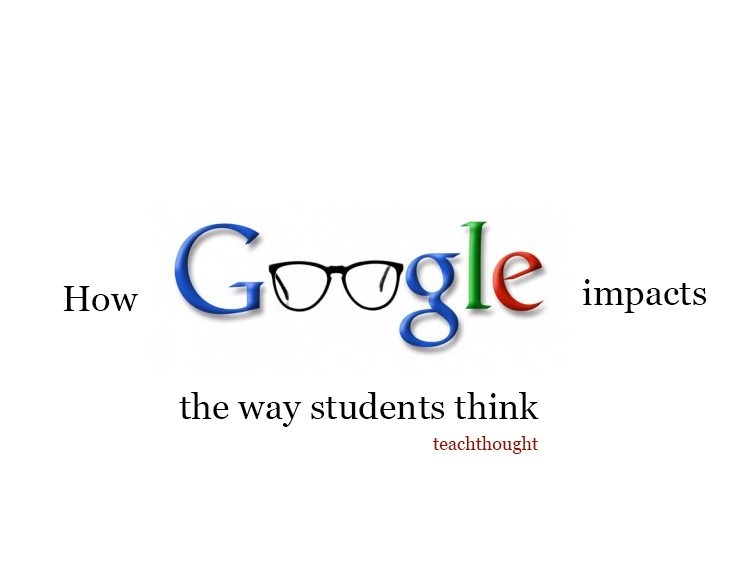
Google Impacts The Way Students Think
by Terry Heick
It’s always revealing to watch students research. When trying to understand complex questions often as part of multi-step projects, they often simply ‘Google it.’
Why do people migrate? Google it.
Where does inspiration come from? Google it.
How do different cultures view humanity differently? Google it.
Literally Google it. Type those questions word-for-word into the Google search box and hope for answers. Educators cringe, but to the students it makes sense. And if you think about it, this is actually helpful–a rare opportunity for transparency into the mind of a student.
When your formative years are spent working your fingers through apps and iPads, smartphones and YouTube, the digital world and its habits can bend and shape not just how you access information, but how you conceptualize it entirely. You see information differently–something that’s always accessible.
And you see knowledge as searchable, even though that’s not how it works.
How Google Impacts The Way Students Think
1. Google creates the illusion of accessibility
Google is powerful, the result of a complicated algorithm that attempts to index human thought that has been digitally manifest. Sounds contrived, but that’s exactly what it does. And because of Google–and to an extent, social media in general–users tend to view information through that same kind of infrastructure.
The result? It creates the illusion that answers are always within reach even when they’re not. In fact, if users can Google answers to the questions they’re given, they’re likely terrible questions.
2. Google naturally suggests ‘answers’ and ‘answers’ are stopping points
When students are looking for an ‘answer,’ good fortune sees them arrive at whatever they think they’re looking for, where they can (hopefully) evaluate the quality and relevance of the information, cite their source, and be on their merry way.
But with the cold logistics of software, having come what they were looking for, learners are left with the back-button, a link on the page they’re on, or a fresh browser tab. While it’s not a Herculean task to return back to notes, an app, or a partner via Skype, users who Google Abuse can at times be uncertain how to apply, integrate, or synthesize their findings, making it almost useless.
Having found an ‘answer,’ rabid-Googlers are ready to ‘finish’ the assignment.
Or are ready for more Googling (because Googling is easier than thinking).
3. Being linear, Google obscures the interdependence of information
Since Google looks for information as destinations–go here to find this–it conditions its most frequent users to do the same. But in all of its potency, it can make opaque the process of information seeking, and more critically the relationship between data points–even those that seem to be conflicting.
Especially those that seem conflicting.
By ignoring the phases of inquiry learning, premature Googlers often find what they want rather than what they might need. In this way, it underscores the independence of information rather than interdependence. Instead of looking at information and data as components of knowledge, and then understanding, it instead treats information in more binary terms: black or white, right or wrong, credible or not credible, good or bad.
One Response: Information Upstarts
The funny thing is, none of this is Google’s fault. Wikipedia is a perfect source of information provided you understand how sources and information work. Same with Google. In and of itself, it’s literally a perfect, whole thing that does exactly what it’s supposed to do; it’s misunderstanding the technology itself that causes problems.
The natural limitations of Google have led to a cottage industry of digital platforms that have moved past simple mass curation. These traditional social bookmarking sites like Pocket, diigo, pearltrees, Scoopit, and other bookmarking tools for teachers (and students) enable users to save information. Social sites like pinterest and others make this process niche, allowing for plucking of visual artifacts, and allowing users to organize them into infinite categories.
Other apps like Brilliant have taken this idea even further, providing more structure to how information is not only discovered but sequenced and applied, which frankly blows any pure search engine out of the water–or at least restores it back to its proper context: a (sometimes too) simple way to find information and what others are saying about it on the way to trying to make sense of it yourself. That’s it.
That’s search.
How Google Impacts The Way Students Think
